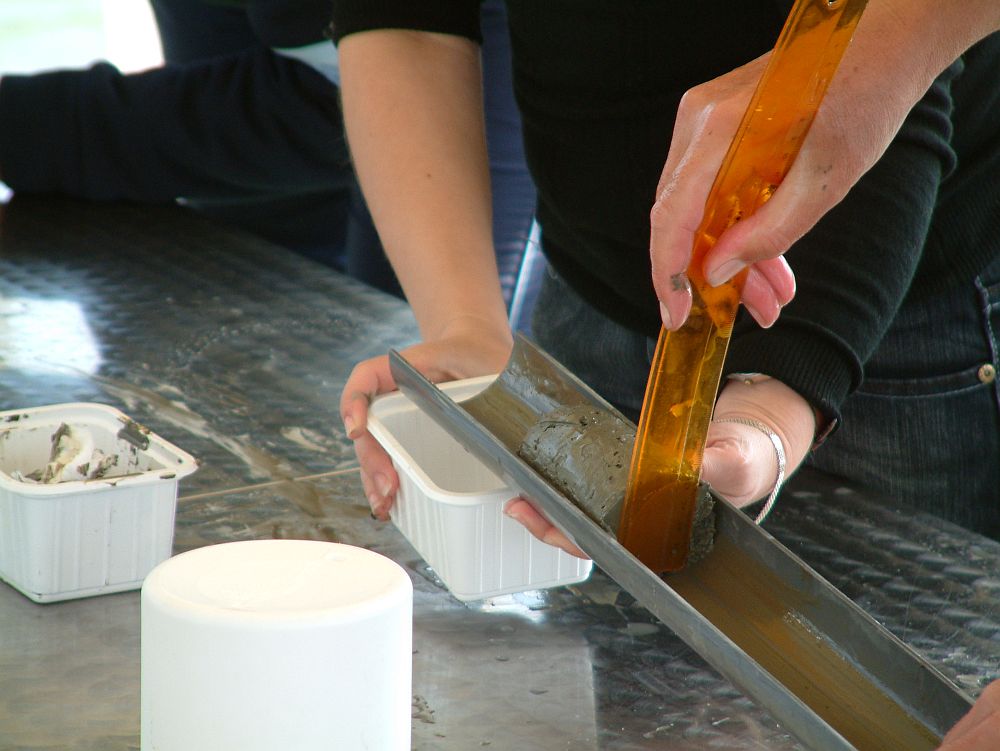Searching for metals behind the Iron Gates
Samples of sediment from the river's bottom are being tested for heavy metals, organix micro-pollutants and nutreints in a project funded by the UNDP-GEF Danube Regional Project.
At one spot, Béla Csányi had to dive into the murky water to loosen the plastic tube from the mucky bottom with his hands. At others, the tube torpedoed downwards and struck hard rock, just where one would think the bottom muck would be metres in depth. "It was very difficult to figure out where the sediment actually was," says Csányi.
Csányi was aboard the research vessel Argus, donated by the German government to the Serbian government in 2002. The vessel was on the Danube River immediately upstream from the 'Iron Gates' dam
 along the Romanian and Serbian border. He and colleague Ferenc Lászlo from Hungary's 'Vituki' Environmental Protection and Water Management Research Institute, and national teams from Romania and Serbia, were contracted by the UNDP-GEF Danube Regional Project (DRP) to take samples of sediment from the river's bottom last September. Samples would then be tested for heavy metals, organic micro-pollutants and nutrients, with government partners from Romania's National Research and Development Institute for Environmental Protection - ICIM Bucharest and Serbia's Jaroslav Cerni Institute, Belgrade.
along the Romanian and Serbian border. He and colleague Ferenc Lászlo from Hungary's 'Vituki' Environmental Protection and Water Management Research Institute, and national teams from Romania and Serbia, were contracted by the UNDP-GEF Danube Regional Project (DRP) to take samples of sediment from the river's bottom last September. Samples would then be tested for heavy metals, organic micro-pollutants and nutrients, with government partners from Romania's National Research and Development Institute for Environmental Protection - ICIM Bucharest and Serbia's Jaroslav Cerni Institute, Belgrade.
The three-day study was needed to assess the sediment 'trapped' by the dam in the massive artificial reservoir that was created behind it. Results will provide valuable information to the two countries as well as the International Commission for the Protection of the Danube River (ICPDR) about the accumulation and distribution of, and changes in, pollution over time in the reservoir.
This will then inform decisions about whether measures need to be taken to clean the sediment as part of basin-wide efforts to meet the EU Water Framework Directive by 2015.
The reservoir itself is over 100 km long with effects that can be felt as far away as Belgrade. Its width ranges from a few km to about 200 m within a beautiful rock-steeped gorge. More than a century ago, the river's fast waters in the gorge had propelled engineers to construct a steam-powered device that pulled ships through the chaos to safety.
Prehistoric tectonic shifts in the earth's crust formed the gorge. "Little is known about its bottom structure other than it is actually lower than the surface of the Black Sea over 1000 km away," says Csányi.
"The result is that nobody knows where exactly the sediment is deposited," adds Lászlo. "Besides varied depths, flow conditions also vary. So there are some stagnant zones where sediment settles and other zones where flows are fast and retention is low. Flow conditions also change which means that bottom sediment can be re-suspended and transported away. A full future mapping of the area's depths, structure and flows would help."
One sure thing is that sediment is accumulating. This was proven in 2001 by the first 'Joint Danube Survey (JDS)', launched by the ICPDR, which showed that water transparency in some places downstream from the dam was two metres deep, while the average for the entire Danube is 50 cm and in Budapest it's only 30 cm.
JDS 1 assessed water over the entire Danube River. The Iron Gates was included but not in great detail. At that time, pollutants were discovered in the sediment including pesticides. However, no extreme pollution peaks were mapped.
 "Initial results from last September show no major changes nor any pollution peaks," says Lászlo. Samples are still being tested and final results are expected in November with a final related workshop to be held in February 2007.
"Initial results from last September show no major changes nor any pollution peaks," says Lászlo. Samples are still being tested and final results are expected in November with a final related workshop to be held in February 2007.
The DRP sub-project is also reviewing currently available information on sediment pollution in the reservoir and impacts that might follow the potential remobilization of sediment pollutants. Recommendations for future monitoring and precautionary measures will also be provided.
Picture: Zoltán Szaloky, Golubac Castle






